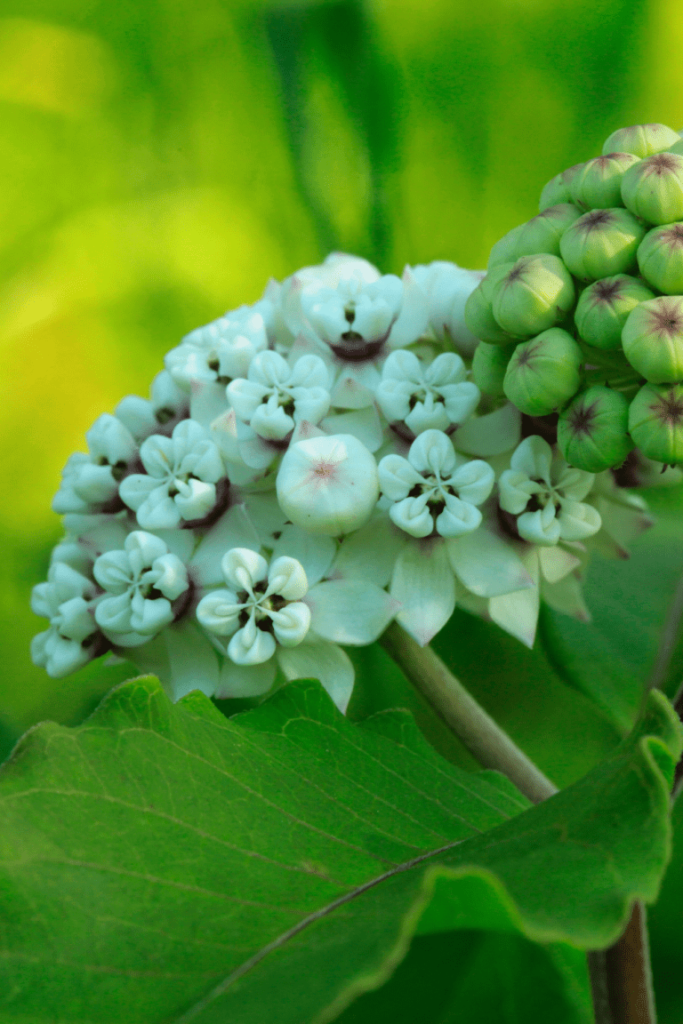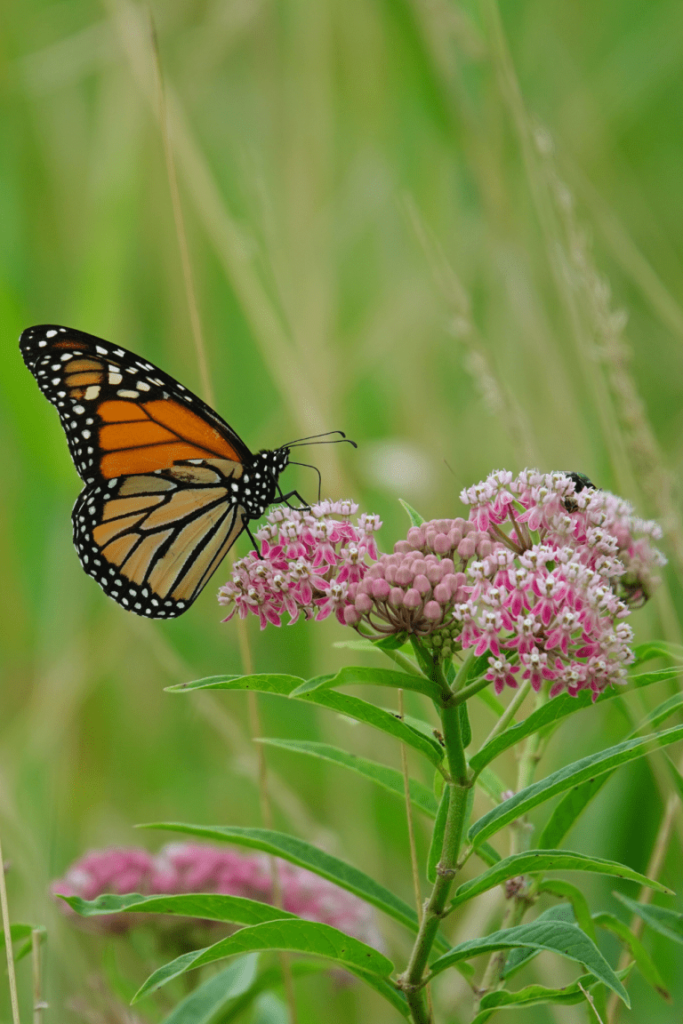Introduction
Milkweeds are more than just attractive garden plants; they are ecological powerhouses that play a pivotal role in supporting wildlife, particularly monarch butterflies. These flowering plants serve as the primary host for monarch caterpillars, providing essential nourishment and a place for metamorphosis. Additionally, milkweeds attract a variety of pollinators, such as bees and hummingbirds, contributing to overall biodiversity.
The question of whether milkweeds are perennials or annuals is crucial for gardeners aiming to establish long-lasting habitats for wildlife. Understanding the life cycle of milkweed species can help you choose the right plants for your garden, ensuring they thrive and return year after year. Let’s dive into the details of milkweeds, their ecological importance, and their classification as perennials or annuals.

Table of Contents
Understanding Milkweeds
They belong to the genus Asclepias, named after the Greek god of healing due to their historical use in traditional medicine. These plants are native to North America and are characterized by their milky sap, which contains toxic compounds called cardenolides. These compounds protect the plant and the monarch caterpillars that feed on them from predators.
Ecologically, they are indispensable. Monarch butterflies lay their eggs exclusively on milkweed plants, making them vital for the survival of this species. Beyond monarchs, milkweeds support numerous pollinators by providing nectar-rich flowers. Their deep root systems also contribute to soil stabilization, particularly in prairie and meadow habitats.
Milkweeds, scientifically known as Asclepias, are not only crucial for monarch butterflies but also play a key role in many ecosystems. The milky sap that oozes from their stems contains toxic cardenolides, which deter herbivores from feeding on them. However, this toxin is harmless to monarch caterpillars, which have evolved to tolerate it. In fact, the caterpillars’ ability to consume milkweed without harm is what makes the plants so vital to their life cycle. As the caterpillars feed on the leaves, they absorb the toxins, making them distasteful and toxic to predators, offering them a form of protection.
In addition to supporting monarchs, milkweeds offer significant ecological benefits. Their vibrant, nectar-rich flowers attract a variety of pollinators, including bees, butterflies, and hummingbirds, which are essential for pollination in many ecosystems. Moreover, the deep, extensive root systems of milkweed plants help stabilize soil, preventing erosion and supporting the health of prairie and meadow habitats. This makes milkweed an essential plant for both biodiversity and environmental health, providing food, shelter, and stability to a wide range of wildlife.
Perennial vs. Annual
Defining Perennials and Annuals
Before diving into the classification of milkweed, it’s important to understand the key difference between annuals and perennials. Annual plants complete their entire life cycle in a single growing season. They germinate, grow, flower, produce seeds, and die within one year. Once the growing season ends, the plant’s lifecycle is finished, and it does not return. Each year, new seeds need to be planted to continue the cycle, making annuals a one-time investment for gardeners.
In contrast, perennial plants live for more than two years, typically regrowing from their rootstock each spring. Even though their above-ground parts may die back during the colder months, the plant itself remains alive below the surface and re-emerges when the weather warms. This cycle allows perennials to bloom year after year, offering long-term value in a garden. With minimal maintenance, perennials like milkweed can thrive over multiple seasons, contributing to your garden’s health and beauty year after year.
Top 5 Facts
Table: Key Facts
| Milkweed Species | Hardiness Zones | Life Cycle | Key Features | Special Care Needs |
|---|---|---|---|---|
| Common | 3-9 | Perennial | Fragrant flowers, attracts monarchs | Control spread via rhizomes |
| Butterfly Weed | 3-9 | Perennial | Bright orange flowers, drought-tolerant | Prefers well-drained soil |
| Swamp | 3-8 | Perennial | Thrives in moist conditions, pink blooms | Ideal for rain gardens |
| Tropical | 9-11 (perennial) | Annual in colder zones | Vibrant red-orange blooms | Cut back in fall to prevent diseases |
| Whorled | 3-10 | Perennial | Delicate white flowers, drought-tolerant | Toxic to livestock |
Fact 1: Species Are Diverse
Milkweeds encompass a diverse range of species, each uniquely adapted to specific climates and soil conditions. Common Milkweed, known for its fragrant clusters of pink flowers, is a versatile species that thrives in USDA zones 3-9, handling a variety of soil types with ease. Its adaptability and charm make it a staple in many gardens and natural landscapes.
In contrast, Butterfly Weed stands out with its vibrant orange blooms, adding a bold splash of color to any setting. This species prefers well-drained soils and is a favorite among gardeners looking to enhance their outdoor spaces with striking, low-maintenance plants. Together, these species highlight the incredible diversity and ecological value of milkweeds.
Swamp Milkweed excels in wet conditions, making it perfect for rain gardens, while Tropical Milkweed’s continuous blooms add vibrant color to warmer regions. Understanding these differences helps gardeners select species that will thrive in their local environment.

Fact 2: Milkweeds Support Monarch Butterflies
Monarch caterpillars depend entirely on them as their sole food source, relying on the plant’s toxic sap to deter predators. This unique relationship provides monarch caterpillars with a critical defense mechanism, ensuring their survival during this vulnerable stage of their life cycle. Without milkweeds, monarch populations would face devastating declines, potentially threatening their long-term existence.
By planting milkweeds in gardens, meadows, and other natural spaces, individuals can play a direct role in supporting these iconic butterflies. These efforts not only aid in preserving monarch populations but also enhance local ecosystems by fostering biodiversity and providing a vital resource for other pollinators.
In addition to providing food for monarchs, milkweed flowers produce nectar that attracts adult butterflies and other pollinators. By planting multiple species, gardeners can create a continuous nectar supply throughout the growing season.
Fact 3: Milkweeds Are Low-Maintenance
Once established, many milkweed species require surprisingly little maintenance, making them an ideal choice for gardeners of all experience levels. Common Milkweed, for instance, has a deep and robust root system that enables it to withstand drought conditions with ease. This resilience makes it a practical and reliable option for regions with irregular rainfall or less fertile soil.
Similarly, Butterfly Weed is a hardy milkweed species that flourishes in challenging conditions, including poor or rocky soils. Its ability to thrive with minimal watering and care makes it a favorite among gardeners looking for low-effort yet impactful plants. Both species exemplify the adaptability and durability of milkweeds, contributing to their appeal in various landscapes.
However, some species, such as Swamp Milkweed, require more specific conditions, like consistent moisture. By understanding the needs of each species, gardeners can minimize maintenance efforts while maximizing ecological benefits. Additionally, selecting milkweed species suited to local conditions can prevent unnecessary challenges and ensure long-term success in supporting pollinators and enhancing biodiversity.
Fact 4: They Can Spread Aggressively
Certain milkweed species, like Common Milkweed, spread via underground rhizomes. While this trait is beneficial in restoring prairies or stabilizing soil, it can become problematic in smaller gardens. To manage their growth, plant milkweeds in contained areas or remove excess shoots regularly.
Alternatively, species like Butterfly Weed have a more compact growth habit, making them an excellent choice for smaller gardens or confined spaces. Unlike Common Milkweed, which spreads aggressively through underground rhizomes, Butterfly Weed maintains a tidy and controlled growth pattern. This makes it easier to manage while still providing the ecological benefits that they are known for, such as supporting pollinators and adding vibrant color to your garden.
Proper planning is essential to ensure milkweeds remain a valuable and manageable asset in any landscape. By selecting the right species for your space and considering their growth habits, you can create a thriving garden that supports wildlife without overwhelming your available area. With thoughtful placement and care, they can enhance biodiversity and aesthetic appeal, no matter the size of your garden.
In addition, incorporating a variety of milkweed species can help cater to different pollinators and wildlife, fostering a more diverse ecosystem. By balancing species with varying growth patterns, gardeners can maintain both ecological benefits and an attractive, well-organized garden. This thoughtful approach allows for a flourishing garden that supports not only monarch butterflies but a wide range of beneficial insects and animals.
Fact 5: Milkweeds Are Sensitive to Pesticides
They are highly sensitive to pesticides, which can harm monarch caterpillars and other beneficial insects that depend on these plants. Even when applied to nearby areas, pesticides can drift onto their leaves, poisoning caterpillars that feed on them. Chemical treatments can also reduce nectar availability, which is vital for adult monarch butterflies and other pollinators. To protect these species, gardeners should avoid using chemical pesticides near them and surrounding habitats.
A better approach is adopting integrated pest management (IPM) techniques, focusing on sustainable and natural solutions. Encouraging natural predators like ladybugs and lacewings helps control pests without harming pollinators. Organic remedies, such as insecticidal soaps or neem oil, provide safer alternatives for managing pests. By creating a pesticide-free zone, you not only protect the insects relying on them but also contribute to a healthier, more resilient ecosystem in your garden.
How to Grow and Care
Choosing the Right Species
Selecting the appropriate plant species for your garden is crucial to its success. Native varieties are particularly well-suited to local climates and soil conditions, offering numerous benefits for the ecosystem, particularly wildlife. Native plants are adapted to thrive in specific regions, making them more resilient to local pests, diseases, and extreme weather conditions. They also provide essential food and habitat for native pollinators, birds, and other wildlife, contributing to the overall health of the environment. When choosing plants, it’s important to prioritize native species to ensure the sustainability of your garden and its positive impact on local biodiversity.
For gardens in colder climates, hardy perennials like Common Milkweed or Butterfly Weed are excellent choices. These plants are well-adapted to withstand freezing temperatures and provide vital support to monarch butterflies and other pollinators. In contrast, for warmer regions, Tropical Milkweed can add a splash of vibrant color with its striking flowers, but it requires more careful management. Tropical Milkweed can disrupt monarch migration patterns if not properly maintained, as it encourages year-round breeding, which can harm the butterflies. Gardeners in warmer climates should be mindful of this and consider cutting back the plants at the right time to prevent unintended consequences on local wildlife.
Planting and Maintenance
Milkweeds thrive in sunny locations with well-drained soil, making them an ideal choice for many gardens. To establish these plants, sow seeds directly in the ground during early spring or fall when the soil is cool and moist. Alternatively, you can start seeds indoors and transplant the young plants outdoors after the last frost has passed. Milkweed plants require consistent watering when young, but once they are well-established, many species are drought-tolerant and can withstand periods of dry weather with minimal care.
Ongoing maintenance of milkweed plants includes pruning spent flowers to promote further blooming throughout the growing season. In the fall, it’s important to cut back the plants to prevent the buildup of disease and pests. During this time, avoid using pesticides, as they can harm the pollinators that rely on milkweed for food and habitat, such as monarch butterflies and bees. By following these care guidelines, you can maintain a healthy, thriving milkweed patch that supports local wildlife.

Frequently Asked Questions
Will These Plants Return Each Year?
Most species are perennials, meaning they come back annually. However, in colder areas, some varieties, such as Tropical Milkweed, may not survive the winter and act as annuals. Selecting types suited to your local climate ensures consistent growth.
Why Is It Illegal in Some Areas?
In certain states, non-native varieties like Tropical Milkweed are regulated due to concerns about their effect on monarch migration and the potential spread of diseases. Gardeners are encouraged to check local guidelines before planting to support native ecosystems responsibly.
What Are Its Benefits?
Pollinator Support: Essential for monarch butterflies and beneficial insects.
Erosion Control: Deep roots stabilize soil in various habitats.
Medicinal Uses: Historically used for warts and skin ailments.
Textile Use: Silky fibers filled life vests during WWII.
What Are Its Other Names?
Commonly referred to as Butterfly Weed, Silkweed, Cottonweed, or Wild Cotton, reflecting its role in nature or the texture of its seeds.
What Are Its Magical Uses?
In folklore, this plant symbolizes protection, dream enhancement, and a connection to the spiritual realm. Its seeds are sometimes used in rituals for their wish-carrying properties.
Uses for Green Varieties
Green Milkweed (Asclepias viridis) plays a significant role in erosion prevention and provides critical habitats for pollinators. Historically, indigenous communities used it for medicinal purposes, including treating respiratory issues.
Harvesting Tips
Seeds: Collect pods once they turn brown and start to split. Separate seeds from fibers manually or with a screen.
Stems: Cut stems in late summer for fiber extraction. Always wear gloves to avoid skin irritation.
Why Are They Restricted in the USA?
While not universally illegal, some species are regulated to prevent disruption of monarch migration and disease transmission. Additionally, non-native types can outcompete native plants, causing ecological concerns.
Symbolism
These plants embody transformation, resilience, and hope. Their connection to monarch butterflies reflects personal growth and renewal.
General Information
In English, this plant belongs to the genus Asclepias. Its name originates from the milky sap released when damaged, which deters herbivores.
Can It Be Harmful?
Its milky sap can irritate skin and eyes due to toxic compounds. Handle with care to avoid discomfort.
How Aggressive Is It?
Certain species, like Common Milkweed, spread rapidly through rhizomes. While beneficial in prairies, their growth should be managed in small gardens.
Visual Traits
They feature upright stems, broad leaves, star-shaped flowers in vibrant colors, and pods that release silky seeds.
Threats to Growth
Broad-spectrum herbicides, overwatering, or pests like aphids can harm these plants. Opt for organic pest control methods and well-drained soil.
Why Are Some Varieties Restricted in Canada?
In some provinces, milkweed is labeled as a noxious weed due to its invasive nature in agricultural areas. However, its ecological importance is gaining recognition.
Conclusion
Milkweeds are essential plants that provide both ecological benefits and aesthetic value to gardens. These versatile plants serve as vital hosts for monarch butterflies, supporting their life cycle and offering a reliable food source. Additionally, they attract various pollinators, such as bees and hummingbirds, enhancing biodiversity in any landscape. Understanding whether these plants are perennials or annuals is crucial for gardeners aiming to cultivate them successfully. Perennial varieties return year after year, offering lasting benefits, while annual species may need replanting depending on the climate. This knowledge helps ensure they thrive in your garden and contribute to a healthier environment. For more detailed insights, visit American Meadows. For more detailed insights on milkweeds, visit American Meadows.
To maximize the benefits of planting they, it’s essential to refine your gardening practices. Start by learning effective methods with guides like Direct Sowing Tips, which provide expert advice on planting seeds directly in the soil. If you’re identifying plants in your garden or considering native species, tools like Google Lens can simplify the process. Additionally, sustainable gardening practices, such as composting, can be enhanced with resources like the Top Electric Composters. By incorporating milkweeds into your garden, you contribute to biodiversity, create a safe haven for pollinators, and enjoy the lasting beauty of these remarkable plants for years to come.
